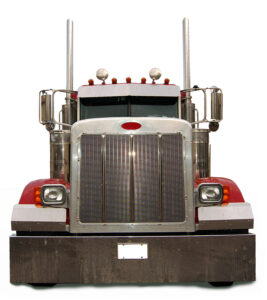
When a tractor-trailer carrying ore in northeast Nevada crossed the center line and collided head-on with a bus carrying 20 Nevada Gold Mines employees, the accident resulted in the deaths of both the driver of the tractor-trailer as well as a passenger on the bus. All of the people on the bus were taken to the hospital for treatment, including five workers who were in critical condition. Nevada State Patrol officials stated that the 6:30 a.m. accident occurred on Nevada 766 in Eureka County when the southbound truck was rounding a curve.
While accidents involving collisions between a semi-truck and a bus are something you (fortunately) don’t hear about too often, the type of crash they experienced is more common than you might think.
Head-on collisions involving tractor-trailers result in more passenger vehicle occupant deaths every year than any other type of semi-truck accident, according to the Insurance Institute for Highway Safety. In one recent year, accidents involving a frontal impact to both a commercial truck and a passenger car accounted for 674 passenger vehicle occupant deaths, which is 31 percent of all passenger occupant deaths in truck accidents.
What Causes Head-On Truck Collisions in Nevada?
Truck driver error is a common cause of these truck accidents. Some of the ways truck drivers cause head-on collisions include:

- Fatigued driving: In spite of Hours of Service regulations intended to prevent truck driver fatigue, the Federal Motor Carrier Safety Administration reports that about 13 percent of truck drivers involved in accidents were considered to have been tired at the time of the crash. Some issues that contribute to truck driver fatigue include sleep inertia, which is defined as short term impairment of safety critical driving skills within the first hour after waking, particularly for drivers who sleep in their sleeper berth; the disruption of the body’s natural sleep/ wake cycle through late-night driving; and sleep apnea, which is a common condition among truck drivers that results in temporary disruptions to breathing while asleep and can cause the driver to feel like he or she is not rested, even after several hours of sleep.
- Wrong-way driving: Long haul truck drivers are often required to venture to cities that they are not familiar with. This can lead to confusion, which may cause a driver to enter a one-way road or ramp while traveling in the wrong direction. Wrong-way driving is one of the major factors that cause head-on collisions of all vehicle types.
- Improperly loaded cargo: Truck drivers are required to properly secure their cargo. However, improper securement is one of the more common violations that results in trucks being taken out of service. Improperly loaded cargo can shift during transport, which can cause the truck to be hard to maneuver and can result in a head-on crash with another vehicle.
- Speeding: Traveling too fast for the conditions of the road also makes a large truck harder to maneuver, particularly around curves on a narrow road that features only one lane for each direction of travel, without a barrier between lanes. This can cause the truck to veer into the opposite directional lane and create conditions that can lead to a head-on crash.
What Makes This Type of Accident so Deadly?
The forward motion of both vehicles involved in a head-on collision is what causes this type of accident to be so dangerous. With each vehicle traveling at speed, the force of the impact causes enormous damage. Even a head-on collision at a low speed of 25 miles per hour is dangerous, and the faster either vehicle is traveling, the more dangerous the accident becomes. Adding to that danger is the size discrepancy that often exists between a semi-truck and the vehicle it strikes. A fully-loaded tractor-trailer can weigh as much as 20-30 times more than an average-sized passenger car, often resulting in catastrophic injuries or even death.
The Types of Injuries Associated with Nevada Head-On Truck Crashes
In a head-on crash, the body of a vehicle’s occupant gets thrust back and then violently forward into airbags, the steering wheel, or—if the vehicle occupant is not wearing a seat belt—into or through the windshield. As a result, head and spinal injuries often result from these accidents, devastating the lives of accident victims. Other common injuries in head-on truck accidents in Nevada include:
- Airbag injuries, which can cause burns to the face or even damage to the eyes, nose, or ears.
- Broken bones, including arms, legs, pelvis, or collarbone due to the limbs failing about and striking parts of the car during the accident, or from the pressure of the seat belt on the lower body and the collarbone.
- Severe cuts and penetrating injuries caused by broken glass from the windshield.
- Crush injuries due to encroachment of the much bigger truck into the passenger area of the vehicle.
Were You Injured in a Nevada Head-On Truck Collision?
If you were injured in a head-on collision involving a heavy truck, you may have the right to recover significant compensation through a personal injury lawsuit. In addition to medical expenses, some of the other damages you may be eligible to recover include lost wages, loss of future earning capacity, property damage to your vehicle, pain and suffering and other impacts on your life that your injuries have caused. Contact a Nevada truck accident lawyer who can help you identify the legal options available to you.
Benson & Bingham Accident Injury Lawyers, LLC
626 S 10th St
Las Vegas, NV 89101
702-382-9797

